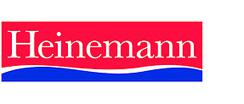- View more resources from this publisher
 University of York Science Education Group (UYSEG)
University of York Science Education Group (UYSEG)
The Chemistry of Food
This chemistry extension module for the Salters’ Science course deals with the nutrients provided by food and their contribution to the diet. It also deals with methods of food processing and preservation. The module begins with a survey of the chemical composition and structure of carbohydrates, fats and oils and with tests for the presence of nitrogen in proteins. The composition of different fertilisers is calculated using relative formula masses. Qualitative tests for minerals in foods and measurement of vitamin C follow. The use of raising agents in baking introduces food additives and chromatography is used to identify colours in sweets. Use of emulsifiers is illustrated through work with salad dressings, milk and butter. A comparison of sweetening agents includes preference taste testing.
Lesson 1: What’s in food?
Survey of food labels, followed by practical tests for nutrients.
Lesson 2: How do food chemicals differ?
Text exercises on the composition and structure of carbohydrates, fats and oils. Practical test for nitrogen in proteins.
Lesson 3: Why use fertilisers?
Students have seen the need for nitrogen in proteins. They calculate the composition of fertilizers using formula and molecular mass of the compounds present. They test the effect of fertilizers on soil pH.
Lesson 4: Vitamins and minerals in our diet
Text exercises on the role of minerals and vitamins in diet, and practical identification tests for minerals in foods.
Lesson 5: Getting the best out of vitamins
The amount of vitamin C in fruit juice is measured, and students investigate the effect of cooking on the vitamin content of cabbage.
Lesson 6: Making light of baking
Buns are naked to test the effect of different raising agents. The action of baking powder is explained in terms of the general properties of carbonates and hydrogencarbonates.
Lesson 7: What additives do foods contain?
A survey of food additives and a list of e-numbers leads to a study of food colours in sweets using paper chromatography and a text exercise on different classes of food additive.
Lesson 8: All sorts of emulsifiers
Students make salad dressings to illustrate the function of emulsifiers. They examine milk and butter.
Lesson 9: A question of taste
Taste preference tests introduce the role of sweeteners in soft drinks. The action of sweeteners is related to a more general model of enzyme action.
Show health and safety information
Please be aware that resources have been published on the website in the form that they were originally supplied. This means that procedures reflect general practice and standards applicable at the time resources were produced and cannot be assumed to be acceptable today. Website users are fully responsible for ensuring that any activity, including practical work, which they carry out is in accordance with current regulations related to health and safety and that an appropriate risk assessment has been carried out.
Downloads
-
The chemistry of food 6.52 MB





